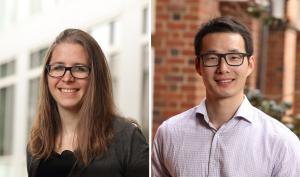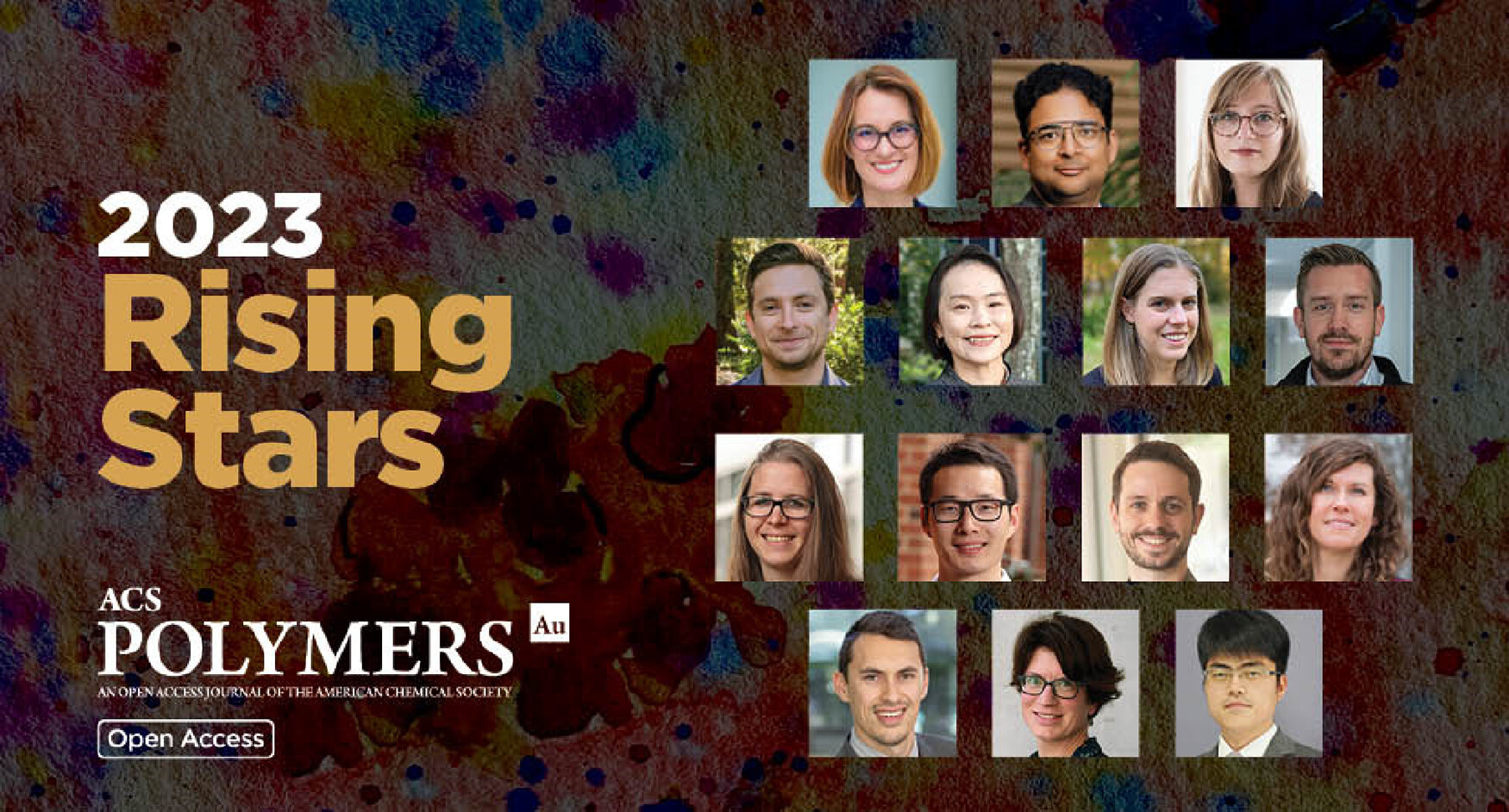
Polymers are a materials engineer’s wonderland.
“The chemistry is just so creative and boundless,” said University of Virginia assistant professor in chemical engineering Rachel Letteri, who, along with Liheng Cai, was named a 2023 Rising Star in Polymers by a journal of the American Chemical Society.
Like Letteri, Cai, an assistant professor of materials science and engineering and chemical engineering, marvels at the possibilities polymers present.
“The evolution of human history includes the evolution of new materials that people invented,” he said.
ACS Polymers Au features Letteri and Cai as two of 14 early-career researchers from around the world who are leaders in polymer science and engineering.
“Rachel’s peptide research and Liheng’s work in 3D printing of soft materials are exciting not only because of the intersections in fundamental and applied science, but also because they’re addressing difficult challenges in areas that will make a real difference in people’s lives,” said William Epling, chair of chemical engineering and the Ann Warrick Lacy Distinguished Professor.
Epling said having two “rising stars” honored at the same time attests to UVA Engineering’s strength and growing excellence in polymers research.
Why Polymers Are a Big Deal
Natural and engineered polymers are everywhere — in food, plastics, even paint to keep it from dripping. UVA researchers are exploiting polymers’ versatility for myriad uses in medicine, sustainability and beyond — in large-scale battery and water purification technologies, and heat-resistant coatings used in manufacturing and jet engines, for example.
Polymers are macromolecules, made up of single-molecule building blocks (monomers), with useful traits — like the ability to self-heal or morph from liquid to solid. Engineers can tinker with the blocks’ arrangement and their bonds to design new materials to perform new functions.
Letteri and Cai design polymer gels and other biomaterials to interact with living tissue with goals such as repairing tissue damage or treating diseases.
“If we can build these materials using all the possibilities the chemistry of big molecules gives us, we can get closer and closer to mimicking natural tissue so we can guide cell growth for therapeutic applications,” Letteri said when she received a National Science Foundation CAREER Award.
Putting Big Molecules to Work
Letteri’s lab is especially interested in designing polymers to deliver peptide therapeutics. Our bodies can use peptides, protein fragments made of amino acids, to fight infection, stroke and other disorders — but researchers must first figure out how to use them.
“As peptides become increasingly relevant therapeutics, our research is advancing understanding of how synthetic polymers can present therapeutic peptides in ways that optimize their function,” Letteri said.
Cai’s lab focuses on “polymer networks,” elastic polymers that can deform and reform while maintaining their desirable properties — which makes them useful for 3D printing — and biomaterials compatible with living systems such as bacteria or human cells and tissues.
For uses from medical implants to building lifelike robots, Cai seeks soft but durable materials — difficult traits to achieve together. For example, his lab is working on 3D-printable “dry” elastomers that contain no water or solvents to leach out or evaporate, which destroys its beneficial properties. But dry materials — as well as most 3D-printed materials — are usually stiff, like hard plastic.
“Lowering the stiffness of elastomers could significantly expand their applications where materials are required to comply with the shape of the object they are in contact with,” Cai wrote in his paper for ACS Polymers Au, which builds on previous discoveries published in Physical Review Letters.
For Discovery and Society
For Letteri and Cai, the wonder of polymers and their potential benefits are hugely motivating.
“If we are able to create new materials, this will always bring new opportunities, new tools and also new devices that can do things that we can never do before,” Cai told UVA Engineering when he was investigating a new kind of rubber in 2020.
“In my own heart, I always wanted to create something entirely different from what I’ve ever seen. In the meantime, there are also societal needs. Both of these drive me to challenge myself.”
Letteri and Cai contributed articles for the ACS Polymers Au Rising Stars issue: Antimicrobial Peptide–Poly(ethylene glycol) Conjugates: Connecting Molecular Architecture, Solution Properties, and Functional Performance, led by first author Zixian Cue, Ph.D. a student in Letteri’s lab, and 3D Printable Modular Soft Elastomers from Physically Crosslinked Homogeneous Associative Polymers, led by co-first authors Shifeng Nian and Daniel Rau, former postdoctoral researchers in Cai’s lab.
